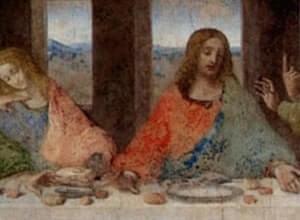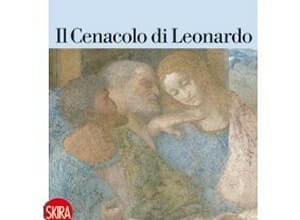CENACOLO.IT
To preserve the masterpiece by Leonardo da Vinci, access to the Last Supper it permitted only small groups of 25 people and only a few days a week.
For this reason, to visit the Last Supper reservations are required. Do not wait: book your visit and do not miss one of the wonders of the world!
Cenacolo.it is a "tribute" to the famous site, we are not the official website and we have no connection with Santa Maria delle Grazie and other museums.
AT A GLANCE
Skip the Line
Printed or mobile voucher accepted
Audio Guide/Headphones available
Book online Cenacolo tickets

VISITS CENACOLO
The unobtainable skip-the-line tickets!

PRIVATE VISIT TO CENACOLO
Excluive experience fot two!

CENACOLO + MILAN TOUR
Skip-the-line and discover Milan!

CENACOLO + PRIVATE TOUR
An exclusive experience!
The Last Supper
The Last Supper, also known as the Last Supper, is a wall painting obtained with a mixed dry technique on plaster (460 × 880 cm) by Leonardo da Vinci, datable to 1494-1498 and commissioned by Ludovico il Moro in the refectory of the convent adjacent to the sanctuary of Santa Maria delle Grazie in Milan.
This is the most famous representation of the Last Supper, a masterpiece by Leonardo and the Italian Renaissance in general. Despite this, the work - due to the unique experimental technique used by Leonardo, incompatible with the humidity of the environment - has for centuries been in a bad state of conservation, which was faced, as far as possible, in the course of a of the longest restorations in history, which lasted from 1978 to 1999 with the most advanced techniques in the sector.
As is well known, Leonardo did not like the fresco technique, whose speed of execution, due to the need to apply the colors before the plaster dries, imprisoning them, was incompatible with his modus operandi, made up of continuous rethinking, additions and small changes, as the piece by Bandello testifies after all. He therefore chose to paint on the wall as he painted on the table: the recent restorations have made it possible to ascertain that the artist, after having spread a rather rough plaster, especially in the central part, and the main lines of the composition with a kind of sinopia, worked to the painting using a typical panel painting technique. The preparation was composed of a mixture of calcium carbonate and magnesium joined by a protein binder; before applying the colors, the artist interposed a thin layer of white lead (lead white), which should have brought out the luminous effects. Subsequently, the dry colors were applied, composed of a greasy tempera made probably by emulsifying fluidifying oils with the egg.
This technique allowed the particular richness of the painting, with a series of small almost infinite brush strokes and a refined tone-on-tone drafting, which allowed a better chromatic unity, a rendering of transparencies and light effects, and an extreme care of the details, visible only from close range; but it was also at the origin of the conservation problems, above all due to the humidity of the environment, bordering the kitchens
What does think the people who bought tickets with us
Everything Ok!
Sara M.
Great customer service. Everything was perfect!Cenacolo.it thanks for the excellent service and fast. We are very satisfied.
Michele V.Choose your tour was a most great choice: accuracy, punctuality, good guide. Very good experience.
Patrizio P.I finally managed to visit the Last Supper. Thank you!!
Yana V.
Why buy tickets on cenacolo.it?
Skip the line
The unobtainable tickets to visit the Last Supper.
Voucher on smartphone
You can use the voucher from your smartphone.
Audio guides and video guides
Book your audio guide together with your tickets
Safe shopping
All transactions take place on super secure secure gateways.


